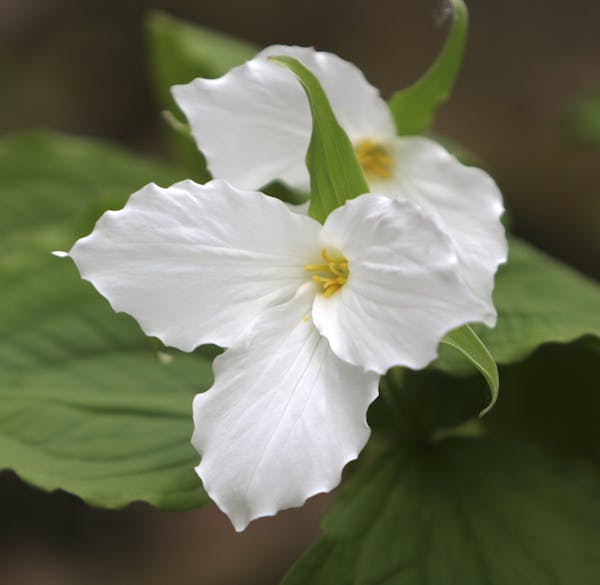Now you see them; now you don't.
That's the short-lived story of the early spring flowers known, aptly, as ephemerals.
These transitory blooms — trillium, bloodroot, Dutchman's breeches — are far less showy than tulips and daffodils, but their fleeting nature makes these unassuming native flowers all the more special.
Ephemerals emerge with the cool temperatures and moist soils of spring, blooming as early as late March in southern Minnesota and on into April and May in the northern part of the state.
They produce stems, leaf out, bloom and set seed all in a matter of six to eight weeks. Then, they perform a vanishing act.
Ideally suited to woodland gardens, they flourish in the dappled shade found under deciduous trees before foliage appears, a place where many other flowers fail to thrive. Their optimistic blooms are equally effective in rock gardens and wildflower plantings, where they add another layer of interest to the native plant palette. (If you're worried about the holes they leave after going dormant, consider planting them with groundcovers, which hide their absence the rest of the season.)
In addition to their delicate beauty, there are strong environmental reasons to consider planting ephemerals. While not necessarily endangered, in the wild they're under pressure.
Every year, ephemerals are lost to development. In the wild, invasive species are crowding them out and their tender green sprouts are a delicacy to hungry hordes of white-tailed deer, which love to browse on them after a long winter.
Erratic weather also can take a toll on these early-risers. If fluctuating temperatures mean native bees aren't available to pollinate them, ephemerals will grow but won't set viable seed. When things go according to plan, however, ephemerals are an important source of pollen and nectar for bumblebees and other wild bees that emerge early in spring.
Fun fact: When they're successfully pollinated, ephemerals are able to produce more seeds to expand their populations — with the help of ants.
The seeds have fatty external growths, called elaiosomes, that make a lipid-rich food for young ants. Once the ants have eaten the elaiosomes, the leftover seeds are discarded. Even though an ant may have moved a seed only yards away from its parent plant, the distance is enough to start a new colony of ephemerals.
If you're tempted to try some ephemerals in your garden, there's one note of caution. Because they're difficult to start from seed, poachers have been known to dig them up from the wild to sell. So, make sure you buy from reputable sources that offer nursery-propagated stock or can vouch for their source.
Where to see them
See ephemerals in their natural setting at the Eloise Butler Wildflower Garden, where they'll offer early spring wildflower walks at 3 p.m. from Saturday through April 18. The garden is located at 1940 Theodore Wirth Parkway and Glenwood Avenue in Minneapolis. Go to www.minneapolisparks.org and search for Eloise Butler Wildflower Garden.

Minnesota Sports Hall of Fame: A class-by-class list of all members

This retired journalist changed professional wrestling from Mankato

